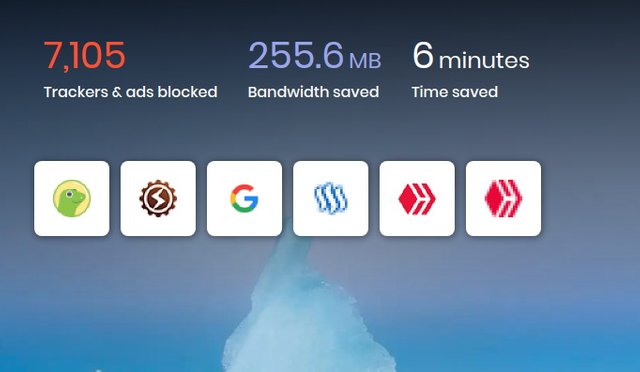Review - Brave Browser
I decided to give into the dark side and I downloaded the Brave Browser. The big selling point for the browser is that it strips the tags that advertisers use to track the performance of ads.
The tracking tags were built with the assumption that one cannot trust the data given by content providers.
It is a little bit like a technology called BLOCKCHAIN. Block chains used distributed computer and complex algorithms to verify that the data on the blockchain is correct. The tags are a witness saying that this is a real web page by a real person.
Stripping the ads is a form of IP theft. Ad funded web sites publish pages that contain both ads and content. The idea is that the ads will pay for the content.
The ads that publishers place on pages is not unsolicited. When your web browsers pulls a web page off a web site, you are soliciting both the ads and the content on the site.
The spam people receive in their email is unsolicited. Email is a push technology. Web sites are a pull technology.
The image for this page shows a sign for an independent bike shop that just shuttered its doors with the Brave logo in the foreground. I got the logo from Brave's media kit.
I guess the company uses the name "brave" for their product as people need to be brave to brazenly commit IP theft.
Brave is not the first group to employ this strategy. You may have heard of a thing called Adware. Adware is a "Browser Helper Object" that strips from ads. They often replace the tracking ids with their tracking ids.
I've used the browser for a week or so. They say that they have removed 7105 ads.

Basic Attention Token
Now for the most pathetic part of the Braze Browser. The Brave Browser itself is ad driven.
The big selling point of the browser is a feature called a "Basic Attention Token."
Ads periodically popup while using the browser. When people click the ad, they go to ad add page. I've clicked on about 80 ads so far; Theoretically I will get $0.80 some time next month.
Paying for clicks is called "incentivized traffic."
Brave is not the first company to pay people to click on ads to receive points. Most of these firms have gone out of business.
I've received 100 ad notifications. These came from only 20 different companies.
The site says that you can give your BAT to select web sites. Apparently, it is possible to transfer the BAT to the Uphold exchange. Most of the reviews I've read indicate that most users are using uphold.
The Need to Change Paradigms
The ad industry has been in turmoil for awhile. The online ad industry was built on the assumption that the ad networks could create a reliable metric for judging the quality of links.
This is why people put up all of those trackers.
What advertisers have discovered is that every metric that they've tried to use to judge the quality of traffic can be manipulated.
As it is difficult to measure the quality of links. My hope is that web sites will turn away from the big web advertisers and start using crypto to monetize their sites and will use use sites like SteemIt to negotiate ads. People could use STEEM or myriads of tokens in Steem-Engine as a way to pay for traffic.
I brought up the idea of buying ads with LEO on Leo Finance.
Conclusion
Personally, I think that Brave is engaged in a cowardly form of theft. The browser is just a fancy form of Adware. It strips the ads that content providers use to fund content and displays its ads instead. The Brave Browser is the very definition of Adware.
Unfortunately, along with the adware that infects many browser helper objects, Brave had broken the paradigm of third party verified advertising. The market needs to respond. I think there is room for SteemIt to be part of that responses.
